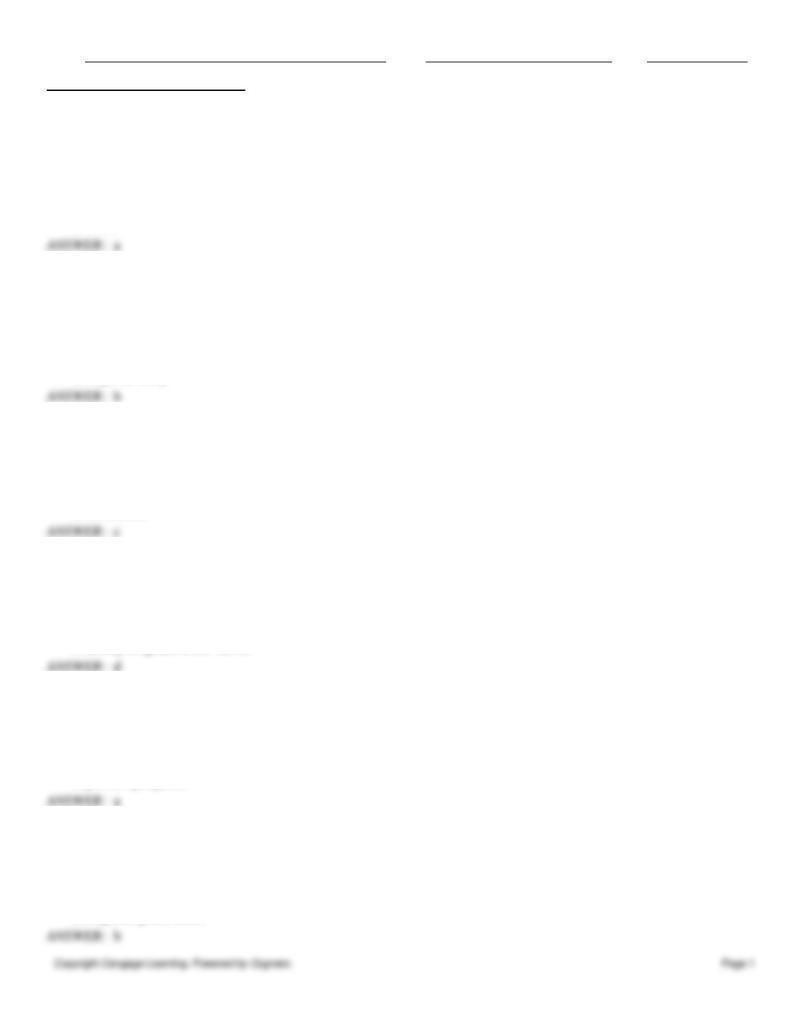
Name:
Class:
Date:
Chapter 03: The Roman Empire
Multiple Choice
1. Rome was reportedly founded by _____ in 753 BCE.
a.
Romulus
b.
Tarquinius Superbus
c.
Apollodorus of Damascus
d.
Nero
2. Depicted on the Column of Antoninus Pius, the _____, or emperor’s ascent into heaven to accompany the gods, became
a central theme of imperial ideology.
a.
decumanus
b.
apotheosis
c.
imperator
d.
imperial entry
3. The Etruscans used _____ columns on their temples.
a.
Ionic
b.
Minoan
c.
Tuscan
d.
Corinthian
4. The Apollo of Veii and sarcophagus with a reclining couple differ from Greek statuary in their _____.
a.
frozen pose
b.
naturalistic depiction of the anatomy
c.
Egyptian influence
d.
ability to speak to the viewer
5. The typical Etruscan tomb form at the Banditaccia necropolis was the _____.
a.
tumulus
b.
temple plan
c.
shaft grave
d.
pseudo-peripteral
6. Rather than a somber theme, _____ are featured at the Tomb of the Leopards.
a.
mythological scenes
b.
banqueting couples
c.
Greek deities
d.
Imperial processions

Name:
Class:
Date:
7. In contrast to Greek architectural sculpture, the Etruscans placed sculptures on the _____ of temples.
a.
pediments
b.
friezes
c.
roofs
d.
podiums
8. The stucco tools and everyday objects decorating the Etruscan Tomb of the Reliefs connected the tomb to _____.
a.
their temples
b.
the slaves who built it
c.
their leaders
d.
their homes
9. Which of the following works of art illustrates how Romanized the Etruscans became in the first century BCE?
a.
Apulu Veii
b.
Aule Metele
c.
Mural painting, Tomb of the Leopards
d.
Sarcophagus with reclining couple
10. The painting in the Tomb of the Leopards celebrates _____.
a.
the joy of life
b.
the triumph of good over evil
c.
victory in battle
d.
the sorrow of death
11. The year 211 BCE was a turning point for both Rome and Roman art because _____.
a.
Rome conquered Greece
b.
Marcellus brought the artistic patrimony of Syracuse to Rome
c.
Last Attalid king willed Pergamon to Rome
d.
Veii fell to the Romans
12. The high podium and single flight of stairs of the Roman Temple of Portunus reflects the influence of the _____.
a.
Greeks
b.
Samnites
c.
Etruscans
d.
Minoans
13. The wealthy or patrician class commissioned _____ to celebrate their elevated status in society.
a.
weapons
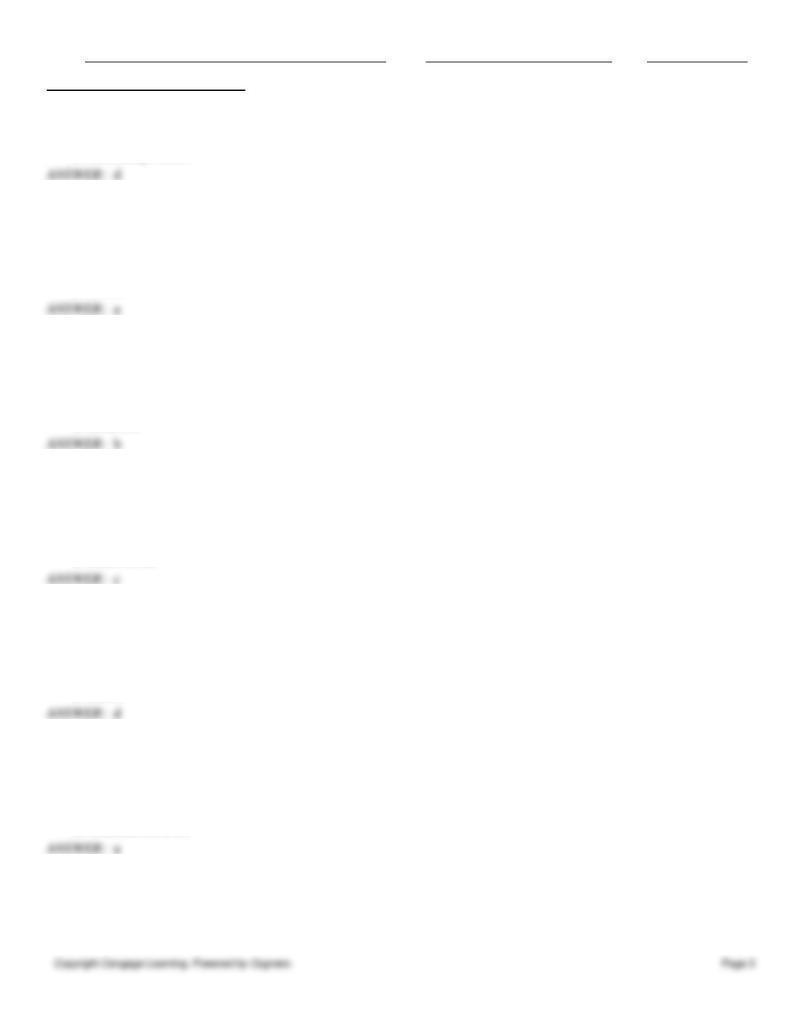
Name:
Class:
Date:
Chapter 03: The Roman Empire
b.
mural paintings
c.
temples
d.
ancestral portraits
14. The heart of a Roman city is the _____.
a.
forum
b.
atrium
c.
basilica
d.
theater
15. The _____ at Pompeii functioned as its law court.
a.
amphitheater
b.
basilica
c.
velarium
d.
orchestra
16. Because they were designed to shut off the street’s noise and dust, Pompeiian houses are described as _____.
a.
meandering
b.
complex in plan
c.
inward looking
d.
multistoried
17. The main gathering area of a Pompeiian house is the _____.
a.
impluvium
b.
triclinium
c.
cubiculum
d.
atrium
18. The First Style of Pompeiian wall painting imitated _____.
a.
marble paneling
b.
landscapes
c.
imperial palaces
d.
Minaoan frescoes
19. The presence of delicate linear fantasies on monochromatic backgrounds characterizes the _____ of Pompeiian wall
painting.
a.
masonry style
b.
Third Style
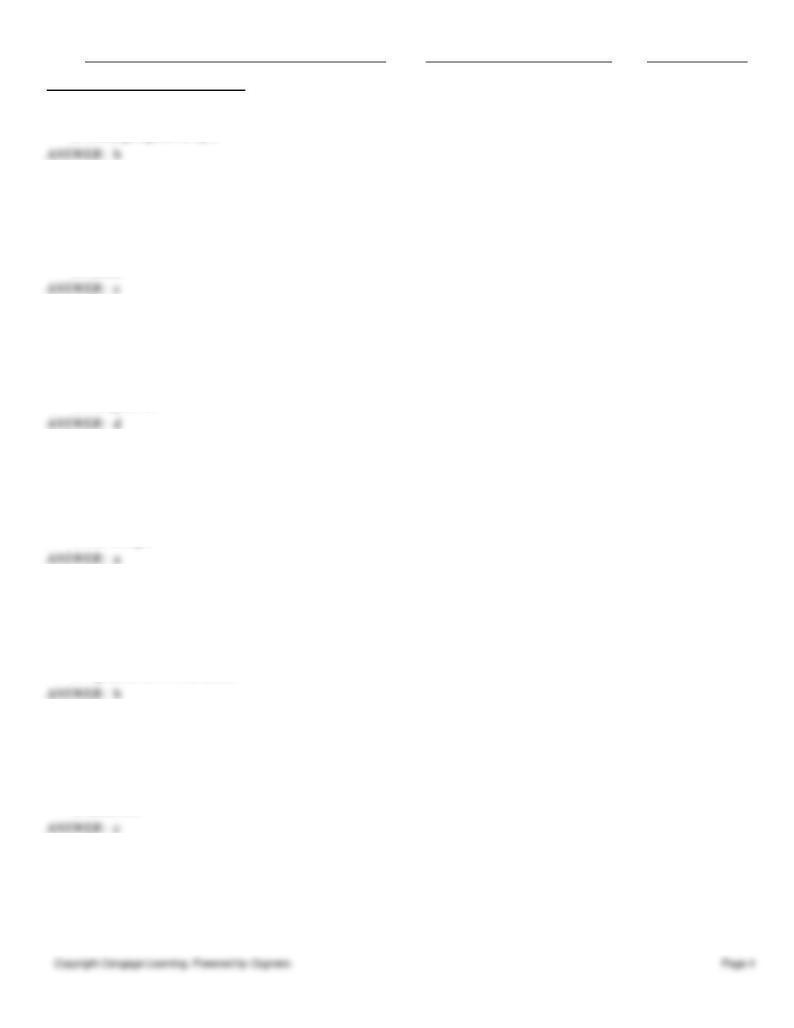
Name:
Class:
Date:
Chapter 03: The Roman Empire
c.
Second Style
d.
linear perspective style
20. The two centuries of peace that began under the reign of Augustus is generally called the_____.
a.
tetrarchy
b.
soldier emperors
c.
Pax Romana
d.
senate
21. The Greek model for the portrait of Augustus as imperator was the _____.
a.
equestrian statue of Marcus Aurelius
b.
Hermes and the infant Dionysos
c.
portrait of Pericles
d.
Doryphoros
22. Augustus consciously revived the _____ style in art and architecture to present his reign as a Golden Age.
a.
classical
b.
Orientalizing
c.
geometric
d.
late antique
23. The emperor _____ established the Flavian line after Nero’s suicide and subsequent civil war.
a.
Antoninus Pius
b.
Vespasian
c.
Constantine
d.
Apollodorus of Damascus
24. The triumphal arch called the Arch of Titus was the first instance of the portrayal of _____ interacting with humans.
a.
lions
b.
centaurs
c.
divine beings
d.
ancestors
25. Trajan’s forum glorified his victories in two wars against the _____.
a.
Greeks
b.
Samnites
c.
Severans
d.
Dacians
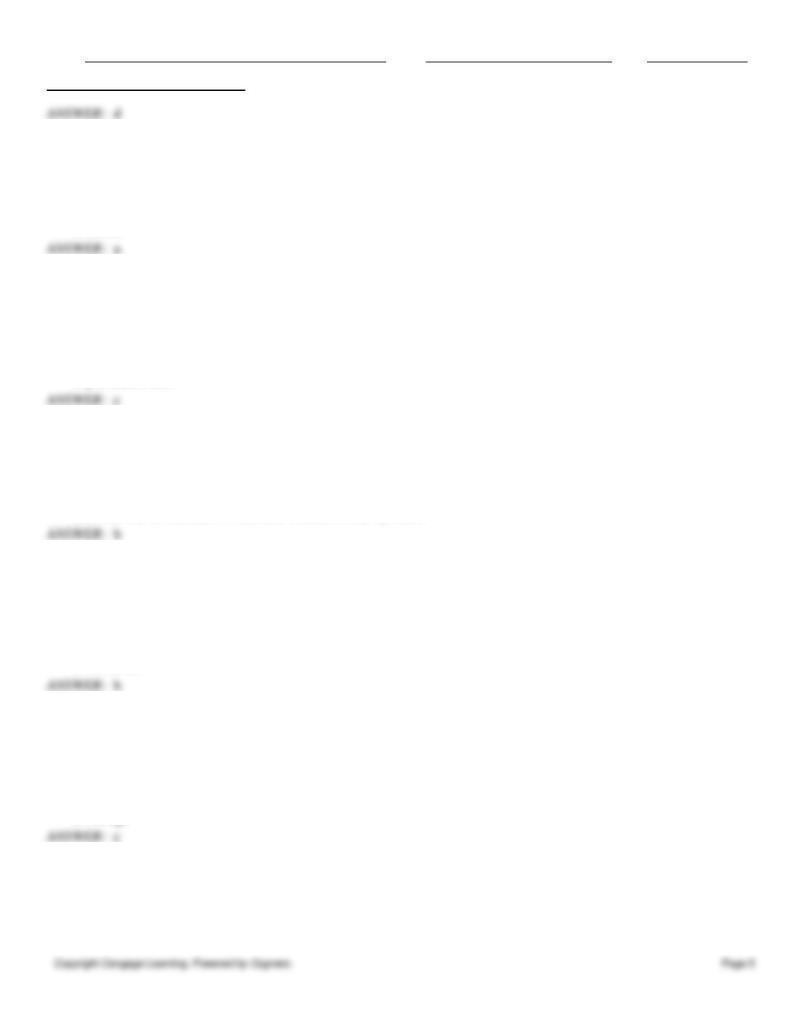
Name:
Class:
Date:
Chapter 03: The Roman Empire
26. _____ was Trajan’s official architect and designer of his forum and markets.
a.
Apollodorus of Damascus
b.
Trajan Decius
c.
Diocletian
d.
Gaeta
27. The presence of children in the procession of the imperial family on the Ara Pacis Augustae (Altar of Augustan Peace)
reflects Augustus’s concern about _____.
a.
Roman egalitarianism
b.
military aggression
c.
the decline in the birthrate among nobility
d.
patrician ethics
28. What function did coffering perform?
a.
It helped expand interior space.
b.
It lightened the weight of a dome or arch.
c.
It supplied an accurate means of measuring interior space.
d.
It allowed the Romans to construct extensive road systems.
29. In contrast to the Greek practice of building a theater along the slope of a hill, _____ supported the rising seating of a
Roman amphitheater.
a.
a cavea
b.
barrel vaults
c.
the frigidarium
d.
the arena
30. Echoing developments in portraits of Marcus Aurelius, the portrait bust of Caracalla is remarkable in its ability to
reveal his _____.
a.
generosity
b.
aspirations to be a god
c.
personality
d.
old age
31. The sadness and anxiety conveyed in the portrait of Trajan Decius reflects the unstable times of the so-called _____.
a.
soldier emperors
b.
Republic
c.
Flavian dynasty

Name:
Class:
Date:
Chapter 03: The Roman Empire
d.
intermediate period
32. During his reign Constantine transferred the empire’s seat of power from Rome to _____.
a.
Ravenna
b.
Constantinople
c.
Alexandria
d.
Persia
33. Constantine and Licinius issued the _____, which ended the persecutions of Christians.
a.
meditations
b.
tetrarchy
c.
Edict of Milan
d.
consular diptych
34. In 293, Diocletian shared power with his rivals, creating a form of government called the _____.
a.
dictatorship
b.
senate
c.
consul
d.
tetrarchy
35. (Figure 3-3)
a.
Terracotta
b.
Bronze
c.
Marble
d.
Wood
36. (Figure 3-2)
a.
Third century BCE
b.
Fourth century BCE
c.
Fifth century BCE
d.
Sixth century BCE
37. (Figure 3-6)
a.
Tomb of the Leopards
b.
Tomb of the Reliefs
c.
Tomb of Hunting and Fishing
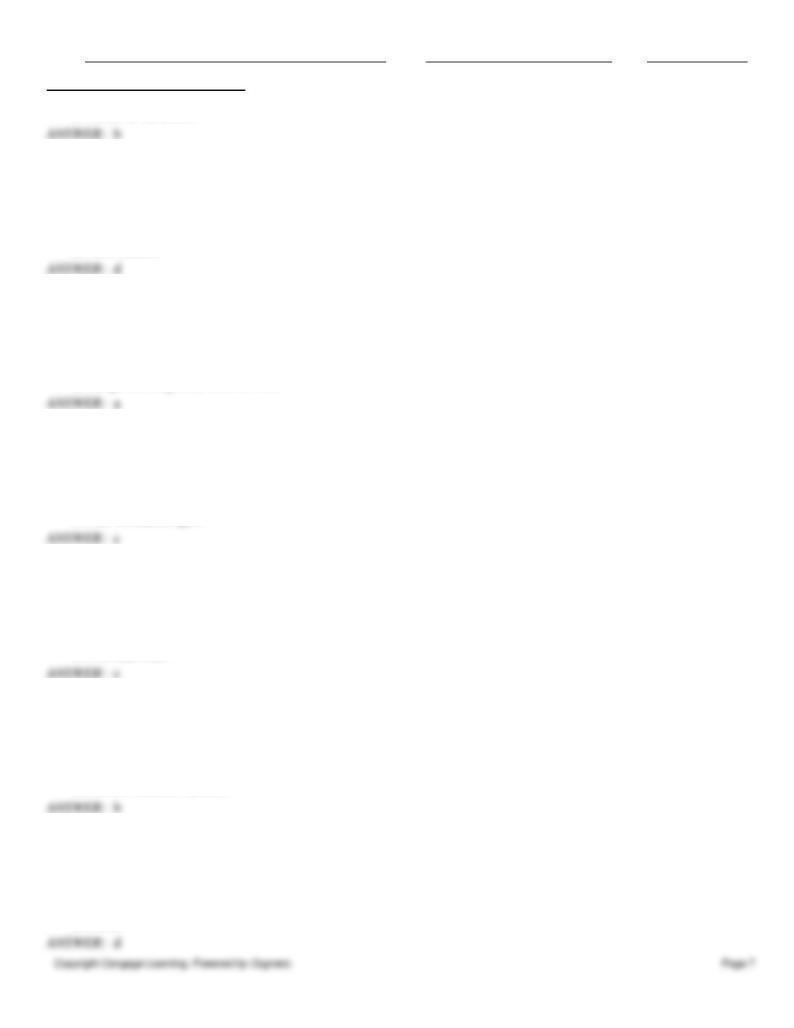
Name:
Class:
Date:
Chapter 03: The Roman Empire
d.
Tomb of the Lions
38. (Figure 3-8)
a.
Apollo of Veii
b.
Capitoline Orator
c.
Lars Pulena
d.
Aule Metele
39. (Figure 3-4)
a.
Sarcophagus with reclining couple
b.
Augustus and Livia
c.
Jupiter and Hera
d.
Tarquinius Superbus and his wife
40. (Figure 3-10)
a.
Etruscan
b.
Early Roman Empire
c.
Roman Republic
d.
Late Roman Empire
41. (Figure 3-37)
a.
Barrel vault
b.
Dome
c.
Groin vault
d.
Post and lintel
42. (Figure 3-53)
a.
Arch of Titus
b.
Arch of Constantine
c.
Arch of Augustus
d.
Arch of Marcus Aurelius
43. (Figure 3-29)
a.
Pompeii
b.
Rome
c.
Praeneste
d.
Nîmes
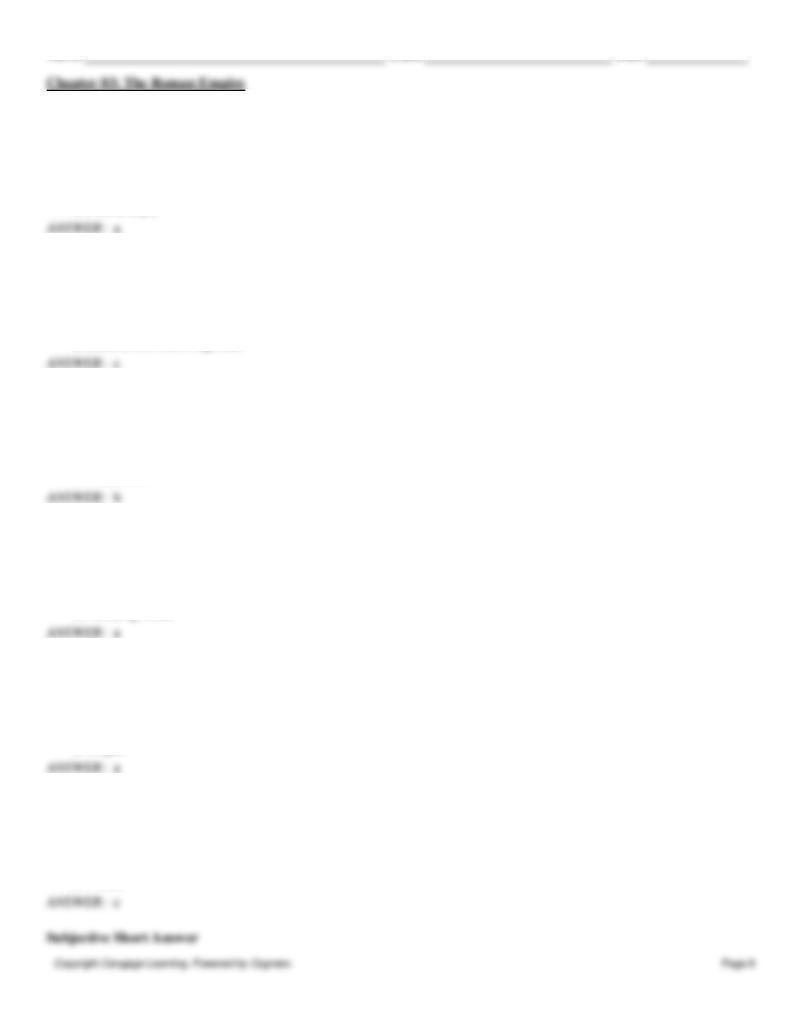
Name:
Class:
Date:
44. (Figure 3-18)
a.
First Style
b.
Second Style
c.
Third Style
d.
Fourth Style
45. (Figure 3-33)
a.
Relief, Column of Trajan
b.
Relief, Arch of Constantine
c.
Relief, Arch of Titus
d.
Relief, Ara Pacis Augustae
46. (Figure 3-17)
a.
Apse
b.
Atrium
c.
Frigidarium
d.
Caldarium
47. (Figure 3-42)
a.
Mummy portrait
b.
Sarcophagus portrait
c.
Tomb portrait
d.
Atrium portrait
48. (Figure 3-44)
a.
Caracalla
b.
Vespasian
c.
Augustus
d.
Trajan
49. (Figure 3-46)
a.
Basilica
b.
Temple
c.
Baths
d.
Forum
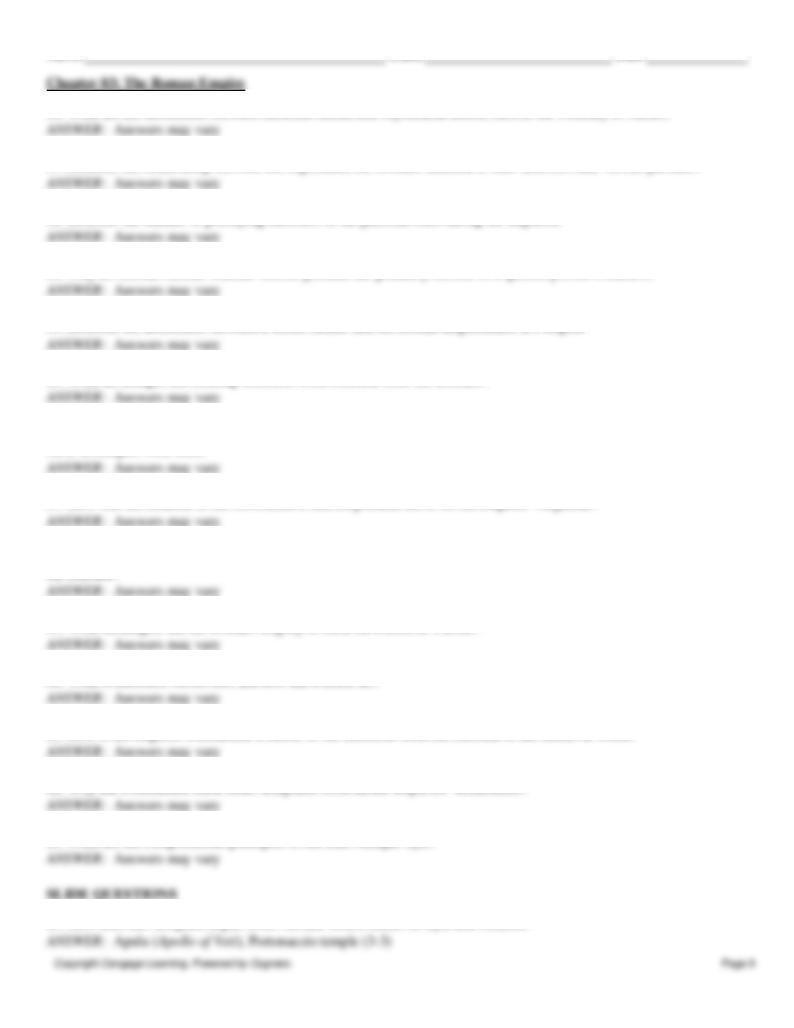
Name:
Class:
Date:
50. What are the differences between Etruscan tumuli and Mycenaean tholoi, such as the Treasury of Atreus?
51. Describe the relationship between the importance the Romans attached to their ancestors and veristic portraits?
52. Describe the manner of portraying members of the patrician class during the Republic.
53. Why do scholars debate whether veristic portraits are primarily records of a specific person’s likeness?
54. Describe the differences between a Greek theater and the Roman amphitheater at Pompeii.
55. What advantages did creating structures from concrete offer the Romans?
56. Describe linear perspective and atmospheric perspective, and identify examples of Pompeiian wall painting where
these techniques were used.
57. How was the creation of the Colosseum a shrewd political move for the emperor Vespasian?
58. How does the reliefs on the Column of Trajan accurately record the general character of Trajan’s campaigns against
the Dacians?
59. What techniques did the Romans employ to build the Pantheon’s dome?
60. What is damnatio memoriae, and how did it affect art?
61. How is the emperor Constantine a mirror of the transition from the classical to the medieval world?
62. Why did Constantine reuse relief sculptures from earlier emperors’ monuments?
63. What are the compositional principles of the Late Antique style?
64. How does this sculpture depart from Archaic Greek statues in style and location?
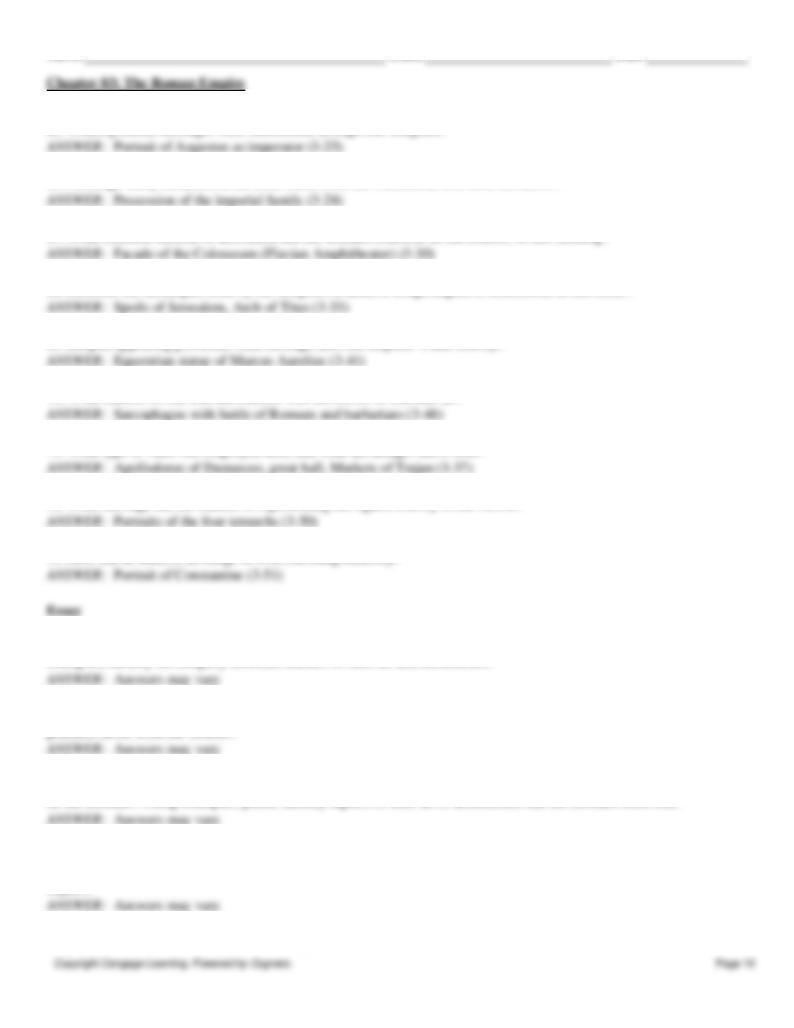
Name:
Class:
Date:
65. Which political messages were transmitted through this sculpture?
66. Although likely modeled on the Ionic frieze from the Parthenon, how does this differ?
67. What common method of decoration did the Romans establish on the exterior of this building?
68. Describe the techniques used by the sculptors to achieve a high degree of illusionism in this relief?
69. Despite appearing powerful, what message does the emperor’s face convey?
70. What features reveal a dissatisfaction with the norms of classical art?
71. What type of vault was employed here, and what advantages did it offer?
72. What message did the manner of representing the figures convey to the viewer?
73. How did he achieve an image of overwhelming authority?
74. Although the Etruscans were strongly influenced by the Greeks, scholars recognize their unique contributions. Using
examples, identify the uniquely Etruscan features of their art and architecture.
75. Describe Etruscan burial practices and the art associated with them. To what extent did their funerary monuments and
practices differ from the Greeks?
76. Roman art is described as being eclectic or borrowing from several cultures. Which cultures exerted a strong influence
on the Romans? Citing examples, please identify aspects of their art or architecture that the Romans borrowed.
77. The discovery of Pompeii provides us with extensive knowledge of the everyday life of the Romans. Describe the
layout of the city and the significant building types and architectural features. Please include both civic and domestic
objects.
78. Styles in Pompeiian mural painting changed over time. Please describe the classifications that scholars have developed
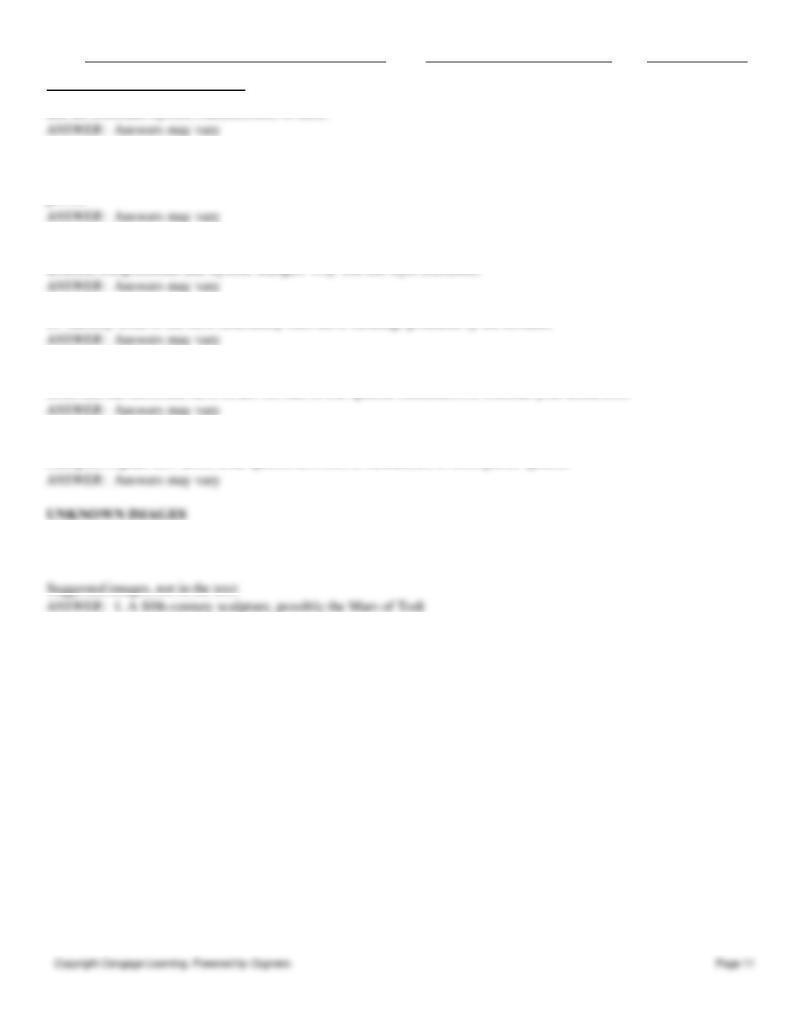
Name:
Class:
Date:
Chapter 03: The Roman Empire
and the dominant stylistic characteristics of each.
79. Portraiture was an important category of art during the Roman Republic and imperial era. Using specific examples,
identify some of the pivotal examples of portraiture with respect to style, political messages, or ability to reflect the time
period.
80. Roman art underwent a dramatic stylistic shift during the Late Empire. Through selected examples describe the
different compositional and stylistic changes. Why was this style embraced?
81. Identify some of the most structurally innovative buildings produced by the Romans.
82. How did the political situation in third century CE Rome differ from circumstances in the first century CE, and what
effect did that difference have on art? Be sure to cite specific monuments to illustrate your discussion.
83. Roman emperors were aware of the power of visual art to communicate ideas about their reign and ideology. Citing
examples, explain how artists used specific artworks or monuments to mold public opinion.
84. Attribute the images on the screen to a culture and give an approximate date. Give the reasons for your attributions,
using complete sentences and referring to specific works discussed in class.
2. Another image from an Etruscan tomb interior, perhaps the Tomb of the Triclinium, Tarquinia
3. A Roman temple, possibly the Temple of the Sibyl or the Sanctuary of Fortuna Primigenia
4. A Roman portrait of the Julio-Claudian style, perhaps Nero or Claudius
5. A Roman aqueduct, possibly Segovia